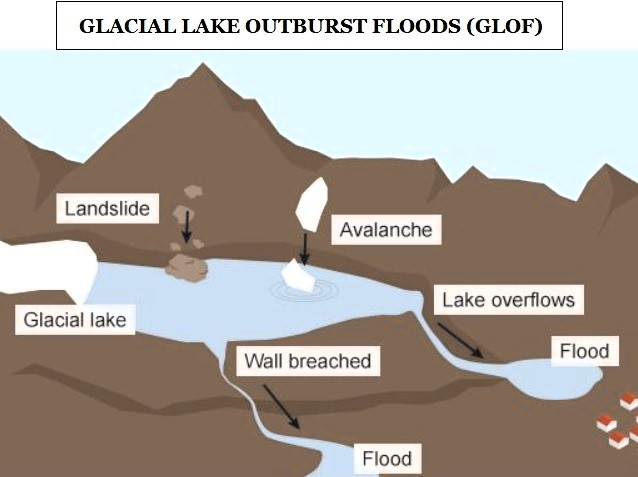7667766266
enquiry@shankarias.in
A cloud burst over Lhonak Lake in North Sikkim resulted in a flash flood in the Teesta River in Lachen Valley killing around 14 people.
|
South Lhonak Lake |
|
A flash flood is a sudden flood of water that occurs within a short frame of time after a precipitation event, which is generally less than 6 hours.

Teesta River
References